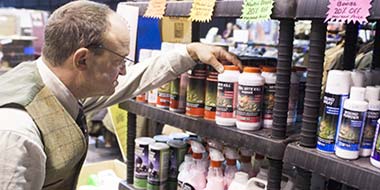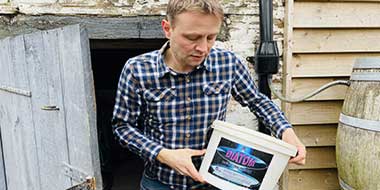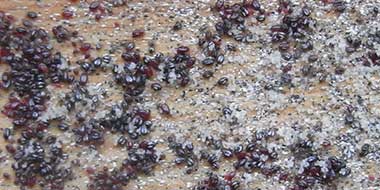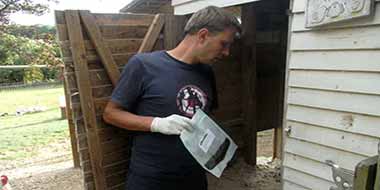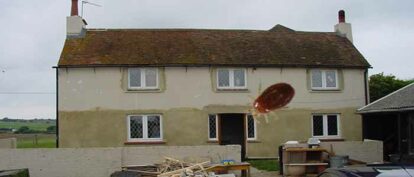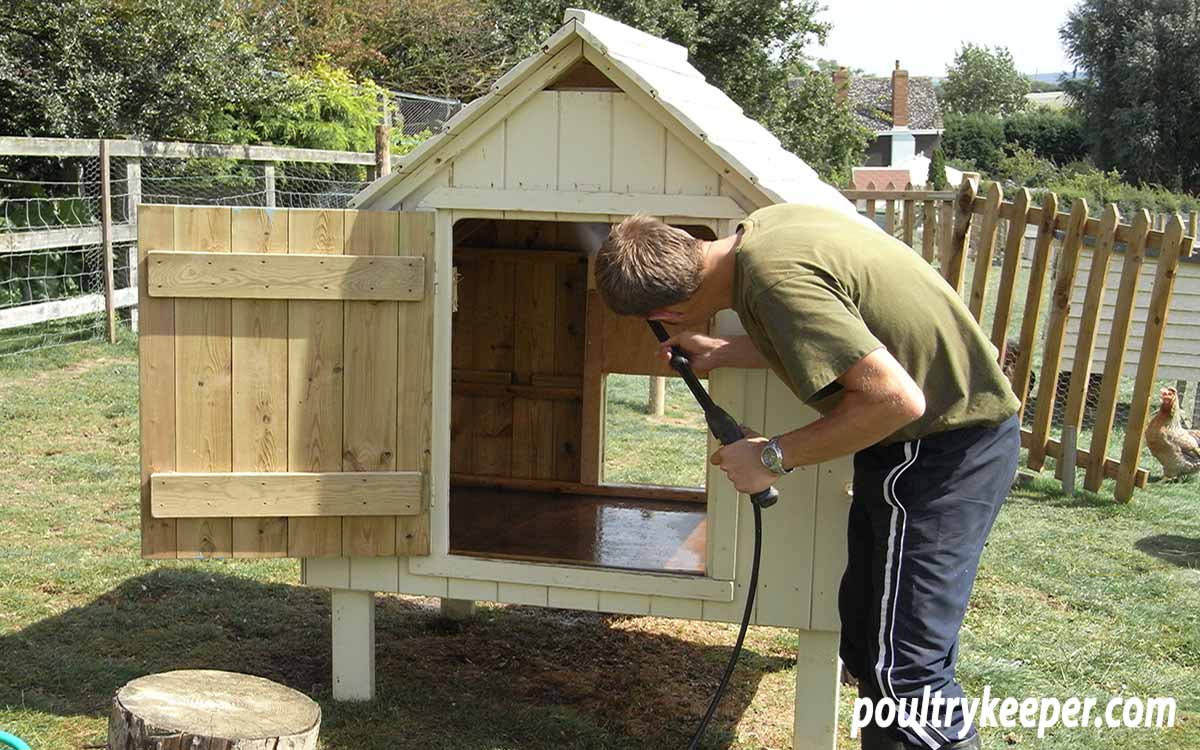
I went on holiday for a couple of weeks during the summer to find one of my chicken houses was full of red mites when I returned. Not just on the ends of the perches but in every crack and crevice and every corner. A red mite infestation is notoriously difficult to remove once they get a grip on a chicken house. This is how I got rid of this serious infestation using a pressure washer, Poultry Shield and Diatomaceous Earth.
It’s a common story when the weather is warm, red mite multiplies very quickly (their life cycle is complete in about a week) and before you know it, you’ve got a serious infestation to deal with.
Here’s how to get rid of red mites on chickens.
First step...
If you're not familiar with red mite at this point, before you read on, I would strongly suggest you pop over to my 'Ultimate guide to red mite'. This gives the low-down on this nasty little red ectoparasite, its lifecycle, and photos to help you identify it.
Dealing with a red mite infestation
So how to get rid of red mites on chickens when there is a large mite infestation in your coop? Normally, I would wash the house down with Poultry Shield for small numbers of mites and use other red mite treatments (the link takes you to my top 8) here and there as spot treatments to kill off these unwanted visitors.
Still, with so many mites in the chicken house, more serious action is required to kill as many of them as you can.
Here’s what I do:
Allow a good couple of hours…
Cleaning
- Clean out the house, remove all loose bedding material. Strip the house down as much as you can.
- Remove as many parts of the coop as possible, including pop holes and anything else that will unscrew easily.
- If you have a felt roof, remove it – yes, unfortunately, you will need to re-felt the roof or replace it with something less ‘mite friendly’. You will find millions of red mites will still live happily under the felt if you don’t.
Poultry Shield
- Soak the cracks with Poultry Shield (other liquid brands are available, this is just my favourite and is very safe to use).
- Leave the Poultry Shield to soak in for 10-15 minutes.
- Using a pressure washer, wash the house and other parts you removed. Get the spray in every crack and crevice. This will take about 30 minutes if done properly. If you miss a crack, hundreds of mites could be hiding in there, so it’s imperative to make sure you get into everywhere possible. The spray will bounce back and soak you at times, so wear old clothes and be ready to get wet and potentially covered in some mites, Urrhh.
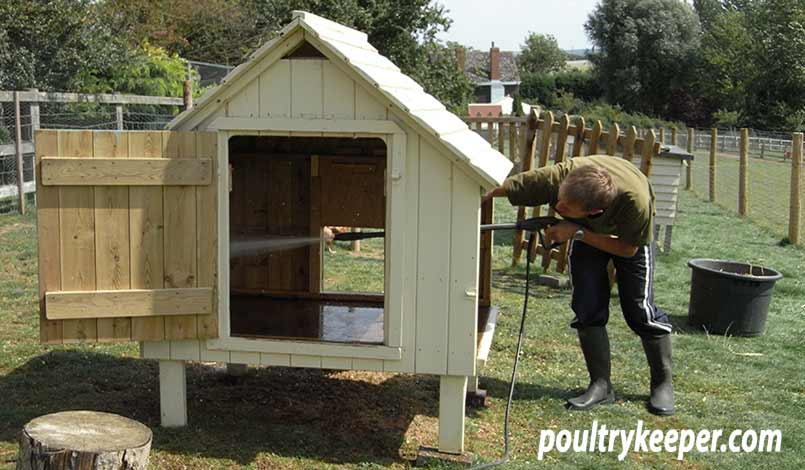
- Wait for the house to dry for 10 to 15 minutes. Now look at it carefully – you should see red mites crawling around. These are the guys that are disturbed and were missed during the first treatment coming out of hiding.
And, repeat...
- Soak again with Poultry Shield, then go over the house again from top to bottom with the pressure washer, concentrating on the cracks to disturb the red mites.
- Repeat the above process as many times as necessary until there are very few mites coming out. The more you remove, the better. Even small populations can multiply quickly. It took me 3 cycles to clean my coop.
Diatomaceous Earth
I wrote a Guide on Diatomaceous Earth for Chickens, so I won’t go into too much detail. Still, I always keep a tub of diatomaceous earth in stock at home because it is useful for treating hens with lice and removing red mites from chicken houses.
I buy either a 2Kg or 5Kg tub and use that to refill a smaller shaker bottle. You can buy Diatomaceous Earth from specialist poultry product suppliers, many of whom sell on Amazon.
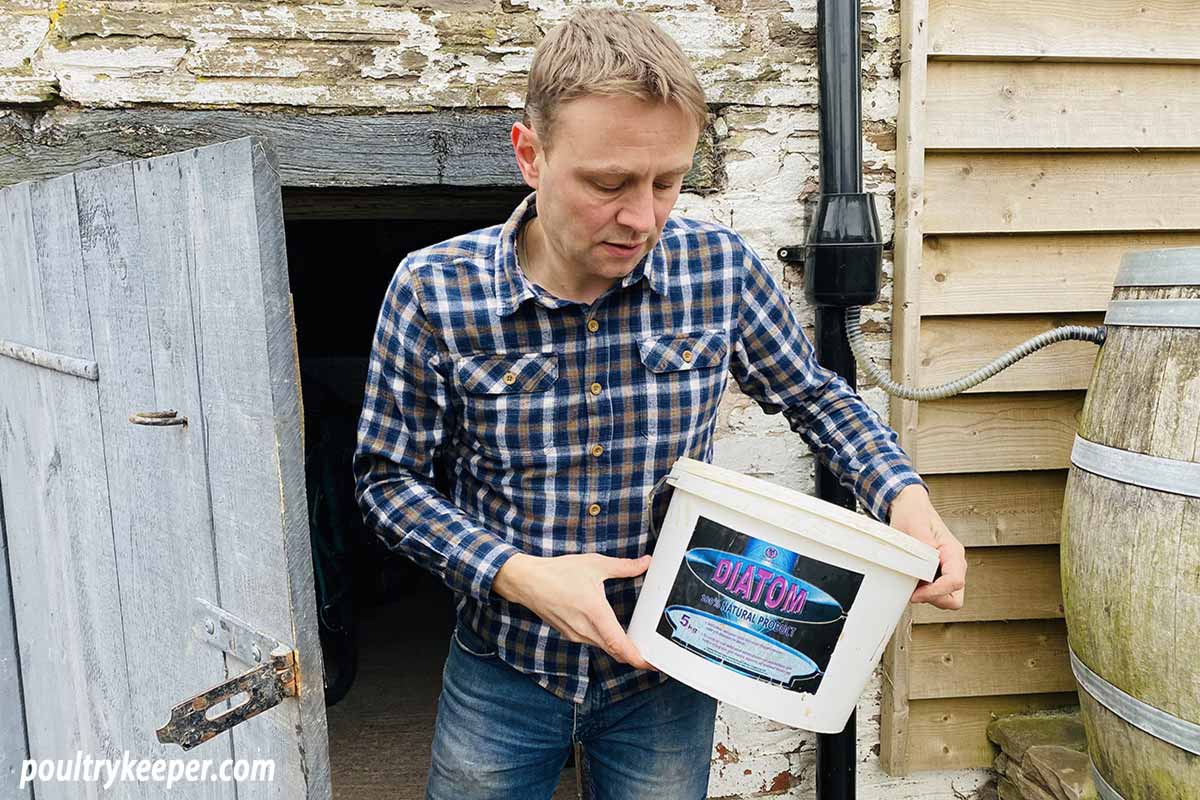
- Put your chicken house back together. If you had a felt roof, leave re-felting until you are mite free for a couple of weeks. A temporary waterproof material like a plastic tarpaulin is ideal.
- Add fresh bedding material as you would after cleaning normally.
Other useful articles & guides on red mite:
- The Ultimate Guide to Red Mite -A comprehensive guide to this ectoparasite.
- Will Red Mite Infest your House? - You might be surprised at the answer...
- Red Mite Treatment: My Top 8 Products - My views on the best red mite killers.
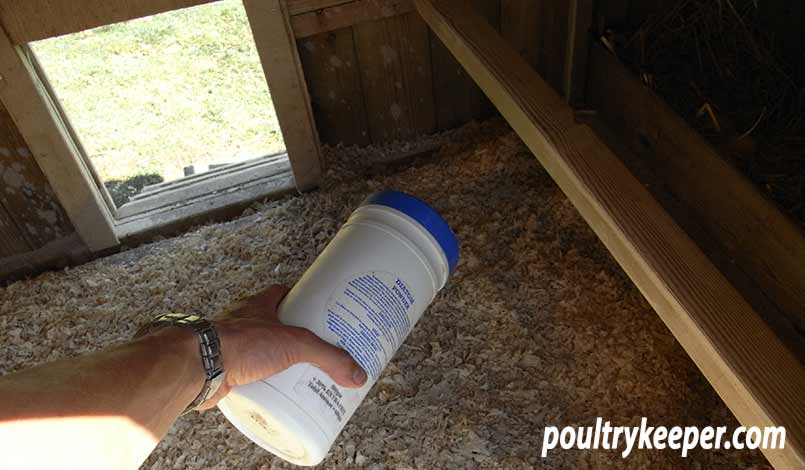
- Sprinkle a generous amount of diatom on the bedding. The manufacturers recommend 500g per Meter squared, which is quite a lot.
- Put a handful of diatom into your hand and rub it into each perch, taking particular care around the ends and the underside. When you have finished, it will be white and smooth, like a gymnasts bar. Red mites have to crawl over this to get to the chickens at night.
Monitor the house for a few days, particularly on perch ends and re-apply diatom to the perches every couple of days or as soon as it starts to wear off.
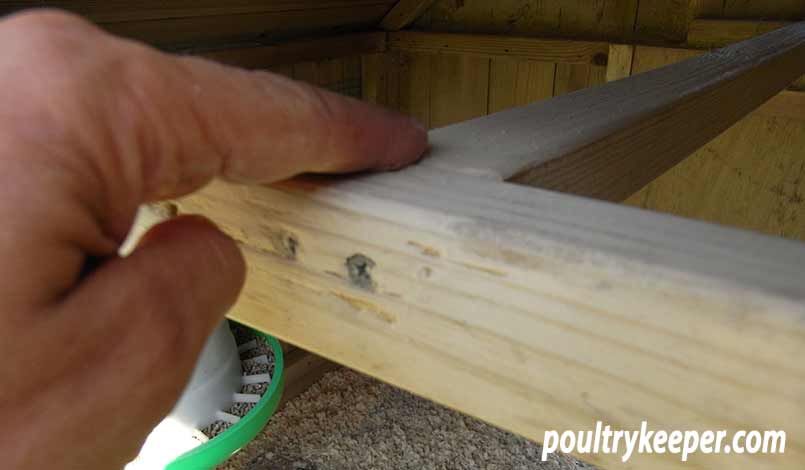
If you got into the cracks successfully, you should notice a drastic reduction in the number of red mite in the house – if you still find reasonable numbers, make up a spray mixture of poultry shield and spray these areas using a hand-held plant mister.
Continue using diatom for a few weeks until there are no more signs of red mite.
Finally
If you have any other tips on how to get rid of red mites on chickens and controlling red mite or would like to leave a comment then please feel free to do so below.
Good luck – I hope you manage to get on top of your red mite problem!

